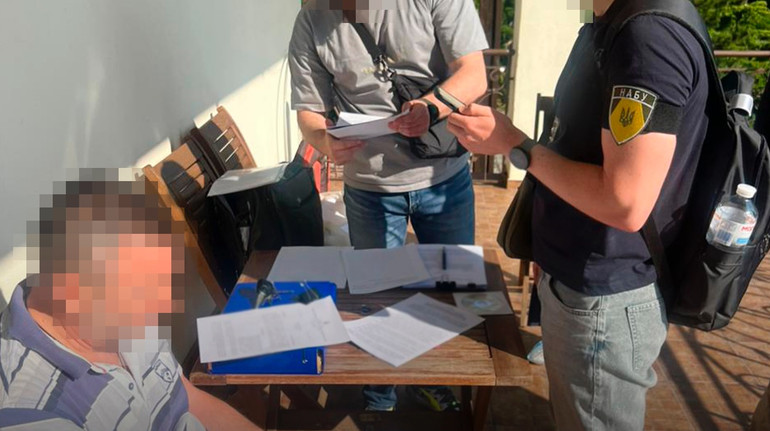what is it for a condition and why it occurs

Imagine the perfect life before bed – does this practice familiar with? It helps many to relax, forget about a hard day, or just get a little positive emotion.
But it happens when dreams are grabbed so much that five minutes before bedtime will gradually transform in fantasy hours right in the middle of the day. Diving into the fictional world begins to take the time during which a person could communicate with friends, work, develop.
This condition is called maladaptive dreaminess. Simply put, it is an escape from the unpleasant reality into a fictional world. And if a person cannot find ways to handle heavy emotions on his own, fantasy can escape more and more.
« UP. Life » decided to find out why this condition arises when it is worth beating and whether it is possible to hide serious illness with maladaptive dreaminess. This was helped by a psychiatric doctor, a cognitive-behavioral psychotherapist Sofia catch.
Also for this material we talked with the equilibrium Ludmilawhich was diagnosed with maladaptive dreaminess and which is shared by her experience in Tiktoka.
How is maladaptive dreaminess manifested in practice? We tell the story of people
The tendency to fantasize is often manifested from a young age. This is the case in the case of our heroine people. In his early childhood, the girl loved to « beat » in the script of her life and to imagine that she would have done otherwise. But then it was only about fantasizing at bedtime.
In her teenage years, the dream began to take up much more space in her life. It was not just about 5 minutes of dreams before falling asleep, but about fantasizing hours in the middle of the day.
The girl turned on the music because it helped to immerse himself in the fictional world better, and performed repetitive mechanical movements: for example, shaking, or walking in a circle, fantasizing about different situations in parallel.
”In my teens, I started dreaming not at bedtime, but at any time. That is, I didn’t just lay. At some point, I realized that it was easier for me to dream in motion. I could sit and sway back and forth then walk around the room in a circle and dream« , – says Luda.
Luda fantasized about different things: « banished » in the head of a situation from life and imagined alternative variants of events, or she inscribed in her history from read books.
”In my fantasies, I often changed situations in which I, in my opinion, did not do the way I would like. She also began to imagine different characters when she became interested in books.
In dreams, I imagined not at all, but my character under the prism of myself. It was a character I improved and adding a part of myself« , – explains Luda.
The critical moment came after graduation.
”All my friends began to move somewhere, and I stopped and closed in the room, because dreams were not left.
You understand that you have to start doing something, but you stop, because your brain says, « It’s boring. Let us do what dopamine brings us. » So you start walking in a circle, dreaming, and you lose your time for these dreams.
It turns out then I stayed at home and this month I spent only on dreams« , – the girl recalls.
After that, the girl decided to deal with the problem. She turned to a psychiatrist, and later experts managed to recognize that in her case, a long -term and severe depression was hidden in her case.
”When I was dreaming, I received dopamine and serotonin, which I lacked during depression, and I lived there. The brain came up with a strategy to simply survive. It was a necessity« , – explains the girl.
Maladaptive dreaminess often occurs in people who have depression, anxiety disorders and even RSUG
What is this maladaptive dreaminess? Is that a disease?
As Sofia’s catch explains, maladaptive dreaminess is Frequent and prolonged immersion in fantasythat evoke strong emotions. It is maladaptive because a person loses control of the duration of « dive » and this can adversely affect different spheres of life.
Signs of maladaptive dreaminess are:
-
frequent and prolonged immersion in a dream. This happens in the middle of the day and takes a long time;
-
Dreams are always bright, with detailed plots, replicas. They evoke a lot of emotions;
-
During fantasizing, a person can move mechanically (for example, to swing back and forth, walk in a circle, rhythmically toss out an object). This allows you to concentrate better and indicates a deep immersion in « building plots ».
This term was proposed by the Israeli psychiatrist Eli Somer. In 2002 he Published A scientific article describing how this protective mechanism works.
”It’s not just five minutes to dream before going to bed. This is when the hour is, and we « fly » somewhere, we draw dialogues, plots, and it prevents us from being here and now. Maladaptive dreaminess is long -term and it interferes with the functioning of a person« , – explains Sofia catch.
As of 2025 maladaptive dreaminess considered a protective mechanism of the psychenot psychological disorder.
”In psychiatry, determining whether there is something disorder, rely on certain criteria for disorders. There is an ICC – an international classification of diseases and DSM – a diagnostic statistical manual for mental disorders.
According to them, maladaptive dreams are not a mental disorder. But it is important to clarify that this is now. Science changes and we don’t know how next« , – says Sofia Sew.
Why does a person develop this protective mechanism? What can be a trigger?
Maladaptive dreaminess develops because a person tries to escape from unpleasant emotions. These can be sadness, anxiety, fear.
”Scientific studies say that maladaptive dreaminess often occurs in people with increased anxiety, depression, sometimes even with even with RSUG.
Scientists say that its occurrence may be associated with a violation of the regulation of attention and deficiency of control functions of the frontal cortex. The frontal bark is our important « controller ». It is she who, conditionally, tells us « you flew somewhere, come back to work, to work. » Instead in some people the frontal bark does not« , – explains Sofia catch.
Other physiological characteristics of the brain can contribute to the occurrence of maladaptive dreaminess.
”In certain people, neurobiologically increased activity in the areas of the brain, which are responsible for imagination. This can be manifested in the fact that a person is more creative.
In general, imagination can help us a lot, but at the same time it can become a protective mechanism of escape« , – says psychiatric.
Often maladaptive dreams develops as a response to a traumatic event for the psyche.
”There was a certain event, emotions were very strong and you can’t stand them. What does the brain do? Alternatively, at this point he can « fly » in fantasy.
A trigger can also be a childhood loneliness (maladaptive dreaminess can be a way of facilitating loneliness). But it is not necessary for some traumatic experience to form this protective mechanism« , – says psychiatric.

Maladaptive dreaminess is considered a protective mechanism of the psyche
What are the signs that maladaptive dreaminess has become a problem?
It would seem that creative fantasy is not so bad, because it can be a source of inspiration to create different stories.
But in practice, it gives a little space to express itself in creativity, because all actions are primarily aimed at fleeing into the fictional world.
The main criterion of maladaptability is that immersion in imagination prevents living here and now. Therefore, you need to analyze the situation and understand if this is true. For example, whether you choose to dream instead of meeting friends, working, doing your hobbies and household chores.
The second is to find out whether there are other symptoms that interfere with the quality of life.
”If a person realizes that in addition to this protective mechanism, it has other symptoms that can alert it, such as a sense of excessive anxiety, depressed mood, a lot of stress, then I would advise you to seek diagnosis to see if there is a concomitant disorder where maladapctive dreamer is a consequence« , – she explains.
If the psychiatrist finds out that maladaptive dreams are associated with depression, various anxiety disorders or RSUGto treat the root cause.
If a person does not see any of the following symptoms, but understands that he has signs of maladaptive dreaminess and wants to get rid of them, you should consult a psychologist.
”It should be cognitive-behavioral psychotherapy that will teach a person to notice when these states arise and learn more awareness here and now.
It is also important to learn other methods of emotional regulation that will not cause distress and change functionality« , – says Sofia Sea.
Is it possible to get rid of maladaptive dreaminess? Is it worth doing?
You can work on this with a psychotherapist. Since it is a protective mechanism, the first task is to determine what it protects the psyche.
”It is very important to follow when a person is happening. Whether when it is heard in alarm, fear, or when many problems – then a person can « fly » and start « drawing » plots instead of solving the problems that are here and now« , – explains Sofia catch.
In addition, the treatment of the main cause – depression or anxiety disorder – can help reduce the desire to dive into imagination. This is the case in the case of people.
”When I just started treatment, I couldn’t dream for about a month. There was no one before. I even tried to dream, but I didn’t feel that you want it and you like it. Then I stopped. But then it returned again.
I tried to get rid of it completely. But my psychotherapist and I have decided that I didn’t need it. I have come to this principle currently: if I want – I will die« , – says the girl.
Sofia catch adds: It is not necessary to demonize maladaptive dreaminess. It should be treated when it « brings distress and is not useful. »
”If it is temporary, if it is inspiration in creativity, to restore the resource, does not cause distress or maladaptation – then it is Okay« , – summarizes the psychotherapist.

Signs of maladaptive dreaminess are frequent and prolonged immersion in a dream
Do many people suffer from maladaptive dreaminess?
In accordance with research In 2022, about 2.5% of adults can suffer from maladaptive dreaminess. But in Ukraine, no such studies have been conducted.
At the same time, there are reasons to believe that there are many such people. A year ago, Luda decided to publish several videos on maladaptive dreaminess in her fad.
”Why did I want to tell? Because I thought I was not as if I was alone in the world with this maladaptive dreaminess« , – the girl confesses.
She was very surprised when her video was gained thousands of views and hundreds of comments where people confessed that she was familiar with this condition.
”There were many teenagers who opened and talked about their experience because they were afraid to tell their parents because they were ashamed. Secondly, parents can sometimes perceive it with misunderstanding, they say, you are not like that? In such cases, I wanted to support something.
It is important for people to be aware that they are not alone with that« , – summed up the girl.








